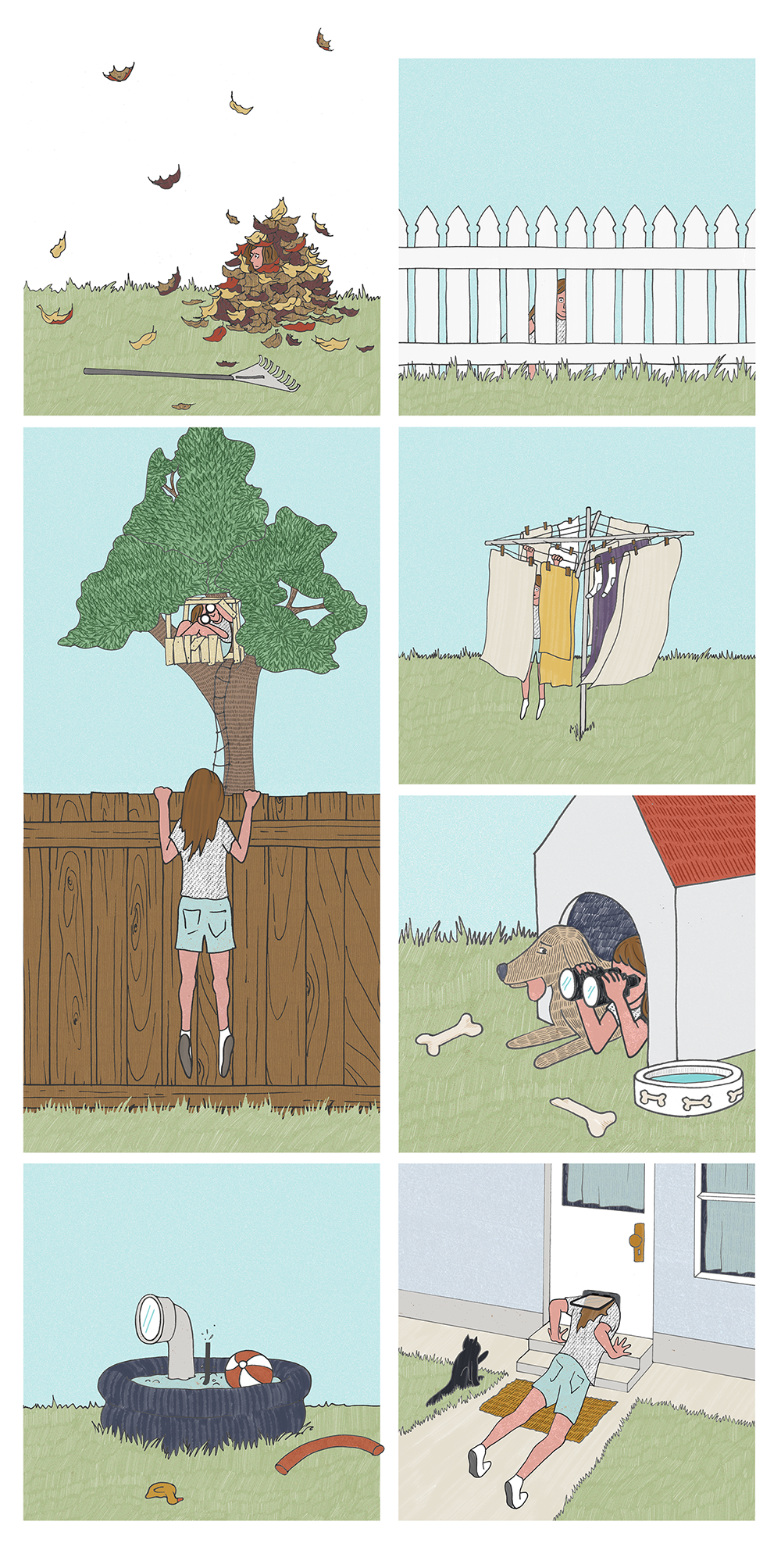
ANDREA HEIMER
June 2014
Interview and portrait by Judith Carnaby
Looking at Andrea Joyce Heimer‘s paintings is like a kind of awkward time travel. Immersing yourself in her intimate painted scenes transports you to an American suburban childhood in the ’90s. She depicts sleepovers, getting ready for Prom, neighbourhood block parties, but all with an edge of sharp and uncomfortable observation and dark undertones. Andrea’s superbly intricate, odd and muddy-coloured paintings are inspired by her observations of her neighbours as she grew up in Great Falls, a small and isolated town among the wild west plains of Montana, USA. The social and personal moments that she observed are then re-imagined and become a strange kind of historical document. Alongside the delicate acrylic and pencil works, the long, descriptive titles give an insight into her almost mythical suburban landscapes.
Andrea is a self-taught painter and has just finished her time as the first artist-in-residence at Idrawalot in Berlin Neukölln. Since 2012 she has been creating a body of work called ‘Suburbia’ and the works shown at Idrawalot are part of the series ‘Suburban – Rituals’. As we chatted she was packing up a number of small paintings, the fruits of her month-long residency. Andrea is now heading back to the USA, where she paints almost full time alongside training horses on a 30 acre former dairy farm in Washington State. She has a very busy second-half of the year coming up, starting an MFA in July and having an exhibition a month until December. Taking a break from re-painting the gallery walls, Andrea described her enjoyment of peeping on her neighbours, her Teenage Mutant Ninja Turtle fan club, and how painting has been a transformative part of her life.
— – – –
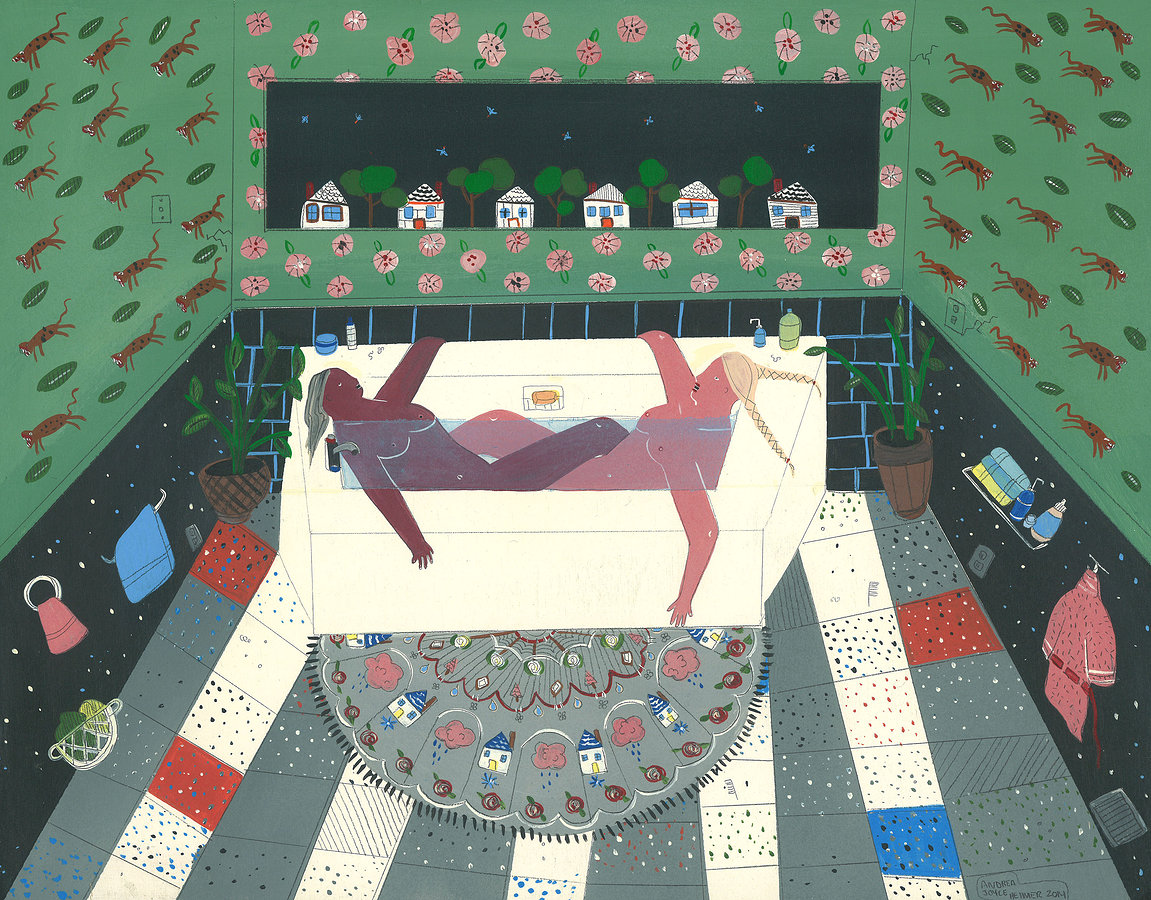
“If You’re Okay Then I’m Okay And We Can Do This Until We’re Very Old” by Andrea Heimer
Judith Carnaby: When did you start painting and why did you start painting?
Andrea Heimer: I worked for years in a really boring job, and I planned for years to start a horse business, which I still do now – teaching riding lessons and training horses. I’ve always enjoyed art, and in about 2006 I started to think about making art for real. I started drawing, and learned how to screen-print and do watercolours, but I didn’t really feel a connection with it, it was more like I was figuring out the logistics of how to paint. Then about 2 years ago I was suffering from clinical depression and I couldn’t leave the house. I’d sort of quit making art at that time because I had always wanted to paint photo-realistically. I had these ideas and scenes in my head but I thought that people wouldn’t get it unless it was perfectly rendered. I tried hard, read books, studied, but I just can’t paint that way. During this spell of depression I was at home and thought, I’m just going to draw one of these scenes with the shitty skills that I have. I started doing the wallpaper designs and that was really meditative, and, without sounding totally dramatic, I think it saved me because it gave me something to focus on. Then my husband came home and said, they’re pretty good in their own way and that gave me confidence to put them out there. And then somehow the painting caught fire. Now I have cut way back on horse training, and am painting nearly all the time.
And how have you felt that your aesthetic and the execution of your painting has developed? Have you seen it change over the last couple of years?
Yes! I have, and I’m so happy about it. When I first started I would have the scenes in my head and I would find photos of people in the positions that I wanted. I had this old overhead projector and I would make a transparency from the photos and I would then trace around it, mainly because I‘m really bad at drawing figures in proportion. It was such a huge pain.Then slowly the figures have developed into their own sort of style, almost geometric, and with lot more sharp lines. I didn’t know that would happen and it’s exciting.
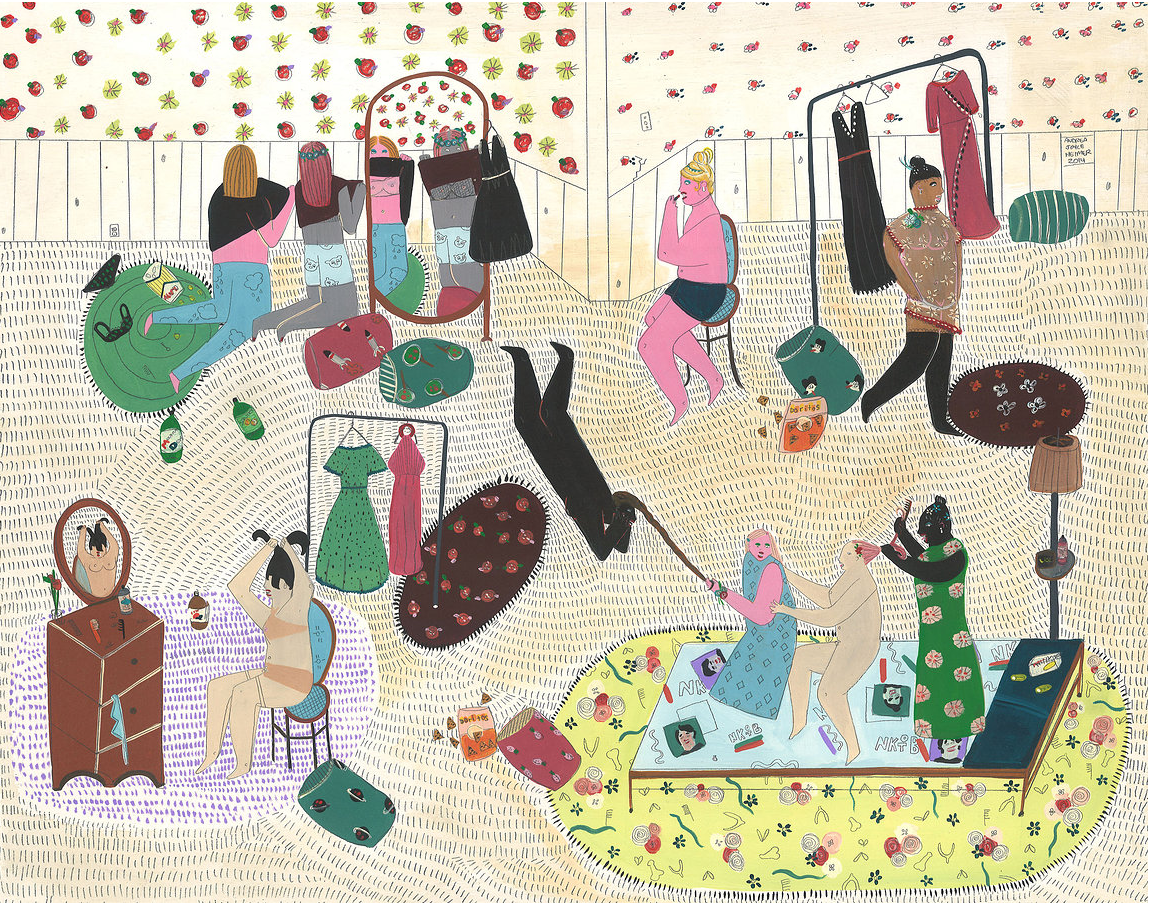
“Preparations For Prom Night 1996, On Plum Street” by Andrea Heimer
For me one of the most fascinating aspects of your work are the almost obsessive patterns. Because you’re doing everything by hand, there are tiny differences between all of the repetitive elements: as you mention, one example is the wallpaper. Those small differences really draw you in; I can feel your hands making the marks, and then another mark and another mark…
My first scene was of some old overweight people playing strip poker. I painted the whole thing, and the walls were just a plain yellow, and I thought, that would look really nice with some wallpaper. My houses always had wallpaper when I was a kid. I knew I would never be able to do that repeating design perfectly, and I tried really hard to make it perfect, but it totally wasn’t! But at least I enjoyed doing it. My husband came home and said, how did you get the pattern so perfect? He doesn’t see well…
Are all of the background details as important to you as the figures and the other actors or objects in the paintings?
Yes they are. I use a lot of symbolism and almost everything in the paintings means something. For example, a new painting I’ve done as part of the residency, ‘Slumber parties were where much was learned about life’, I think it is a bit ominous. In my experience growing up, when I would go to slumber parties at 12 or13 years old, you get a bunch of girls together and it’s almost a bit like Lord of the Flies… You’re there to have a good time, but you’re coming of age, there’s weird competitive stuff, there’s weird sexual stuff, it’s the weirdest time of your life. I decided to do boys in this painting to step out of my comfort zone a little bit. In this particular one I’ve used a lot of storm clouds with thunderbolts. My mom always impressed upon me that the worst possible things could happen at any time, in particular natural disasters. So even in the fun times that was still in my mind as I was a kid, that the house I was in could catch fire and I would burn to death, that sort of thing. The thunderbolts, and those sorts of little details that probably no one would notice unless I explained it to them, all mean something.
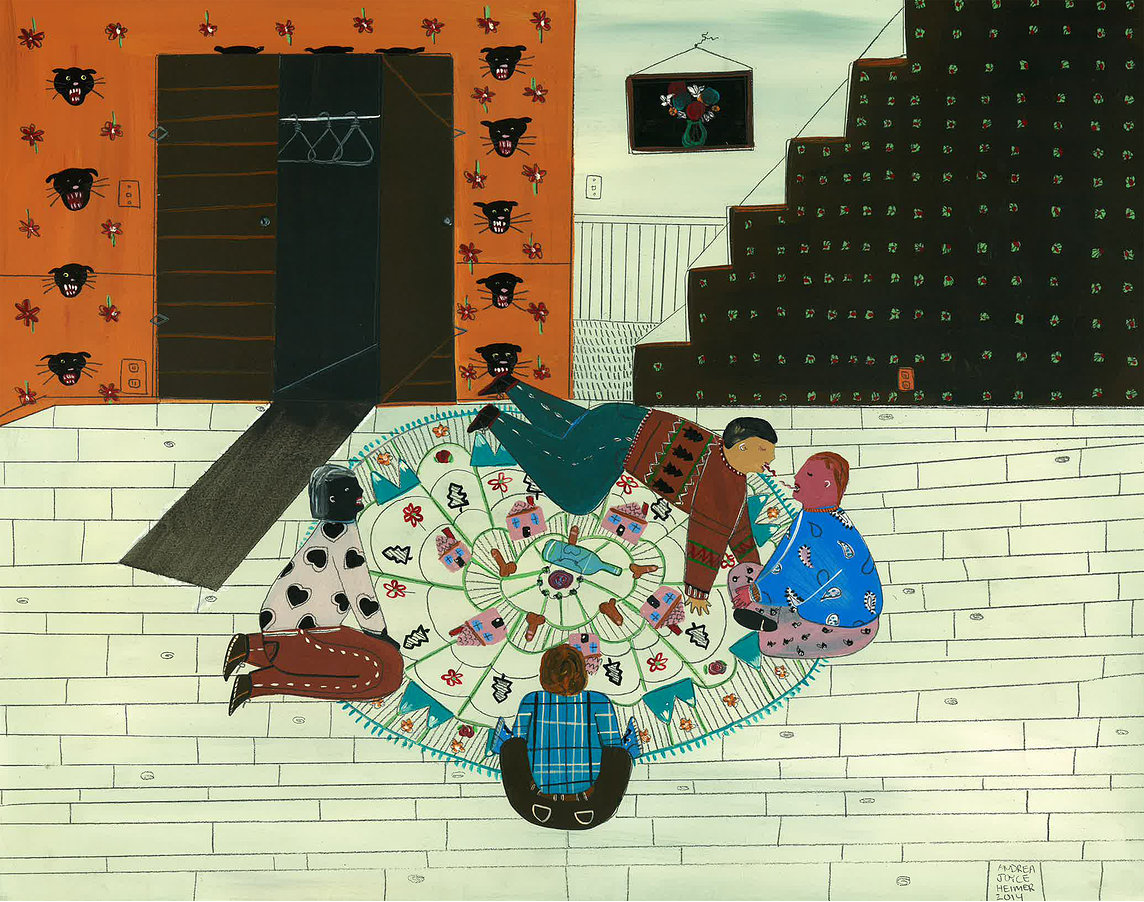
“For Many Of Us In The Neighborhood A Game Of Spin The Bottle Was Our First Taste” by Andrea Heimer
By using these symbols, the paintings are more like representations of myths or memories. I see the works as a mix between remembering shared experiences – like the one of the slumber party or playing spin-the-bottle (above) – and making up a kind of visual story that people tell about when they were growing up.
Some of the paintings are a lot more personal, and some of them, like this one, are a bit more general. The symbolism thing really interests me. I didn’t go to college at all, for anything, and I always wanted to. I want a backup plan in case this painting things doesn’t work out… I recently started researching and I found that there are some Master of Fine Arts programs that will accept you without having an undergraduate degree, and I got accepted to one! That is one of the things that I am going to be focusing on, studying the use of symbolism, and how I can make it more universal – not so personal to me but so the viewer can more easily recognize the symbols.
Anna Ridley from Look/Book recently wrote about Amrita Das, whose work is a contemporary take on traditional Indian Mithila painting technique, and is similar to your work in may ways: really flat awkward perspective, figures, and tiny details depicting everyday life.
I’ve only seen a couple of paintings in person of that kind of style, and I’m just blown away. I don’t know how they do it, do they have one hair in their paintbrush?! I had my face right up to it and thought, why isn’t everyone just gathered around this, staring?
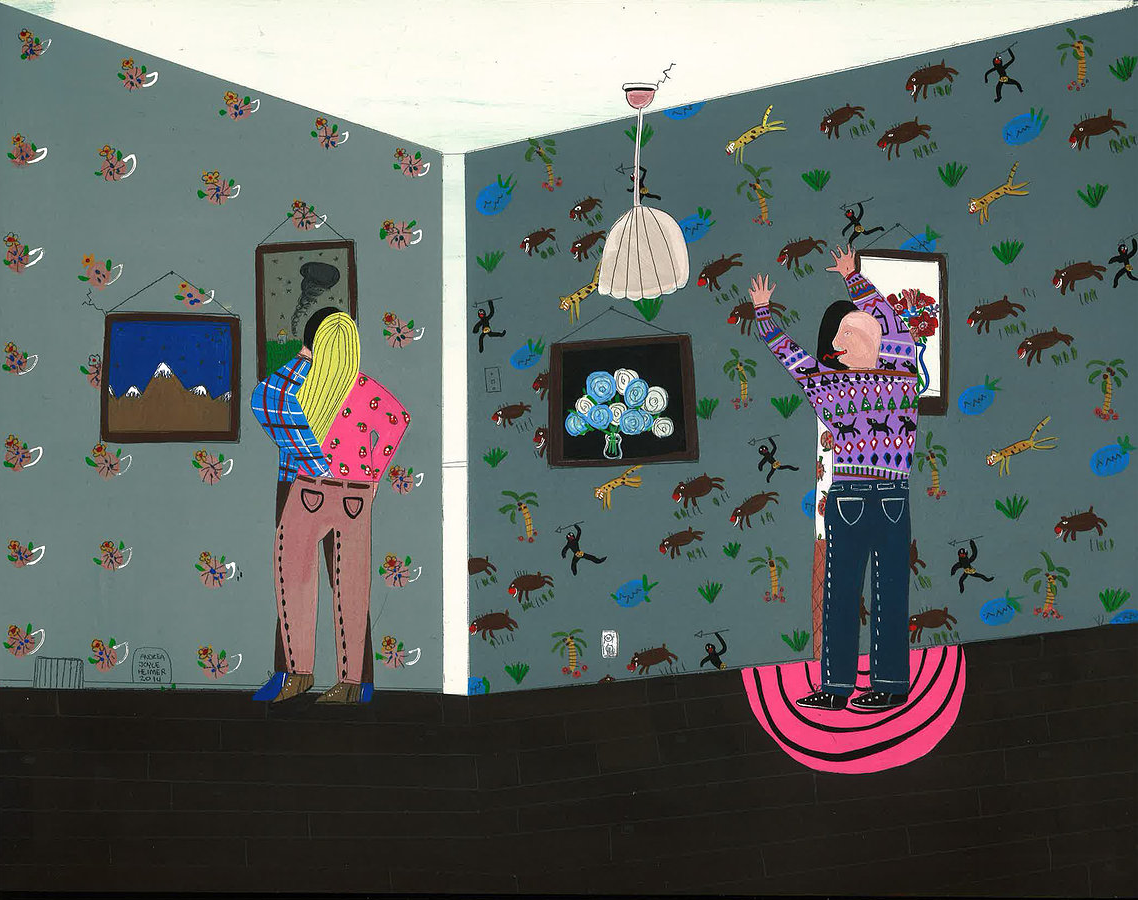
“A Dangerous Party Happened At The Bolands On Birch Street In 1998” by Andera Heimer
Your works really show a sense of humour, in quite a dark way, and the idea of suburbia is a rich area for that. Do you want to talk about the basis behind your paintings?
When I was growing up I felt dislocated with my family and didn’t really make many friends. I sort of took to observing people in my neighbourhood, just as an outsider would. I rode my bike all the time and I started to notice all of these little dramas that were happening between people. It made me feel better, and it gave me something to do. It made me step outside my house and look at what was going on at other people‘s houses and I really enjoyed the observation. And I would get only part of the story, as, basically a Peeping Tom! Well, not really, I didn’t look in any people’s windows! But I did have to fill in the rest of the story in my mind, which is really what these paintings are. Through observation I learned a lot of the things that I wasn’t learning at home, about how people interact. So that’s kind of where they came from.
You have really long descriptive titles for your work, almost explaining the situation you are painting. Is it important for you to have title texts alongside your paintings?
Yes. I want people to know exactly what I was trying to say, I don’t like leaving things up to interpretation. I always know exactly what the painting is going to look like before I paint it, along with the title. When I started painting, people responded to the paintings saying, ‘Yeah I knew somebody like that,‘ or, ‘I lived on a street like that.’ It felt so good, and unexpected, to connect to people like that. But I don’t want them making up their own stories, I want them to know that this is the story for this painting, so when they say, ‘Yeah I get it, I connect with it,‘ then it feels like a real connection. Also I realised that painting in this style, there is a danger of people looking at it and just seeing a funny painting. It’s fine, there’s humour in them, but most of them are pretty dark, so I think the text definitely helps with the definition of the painting.
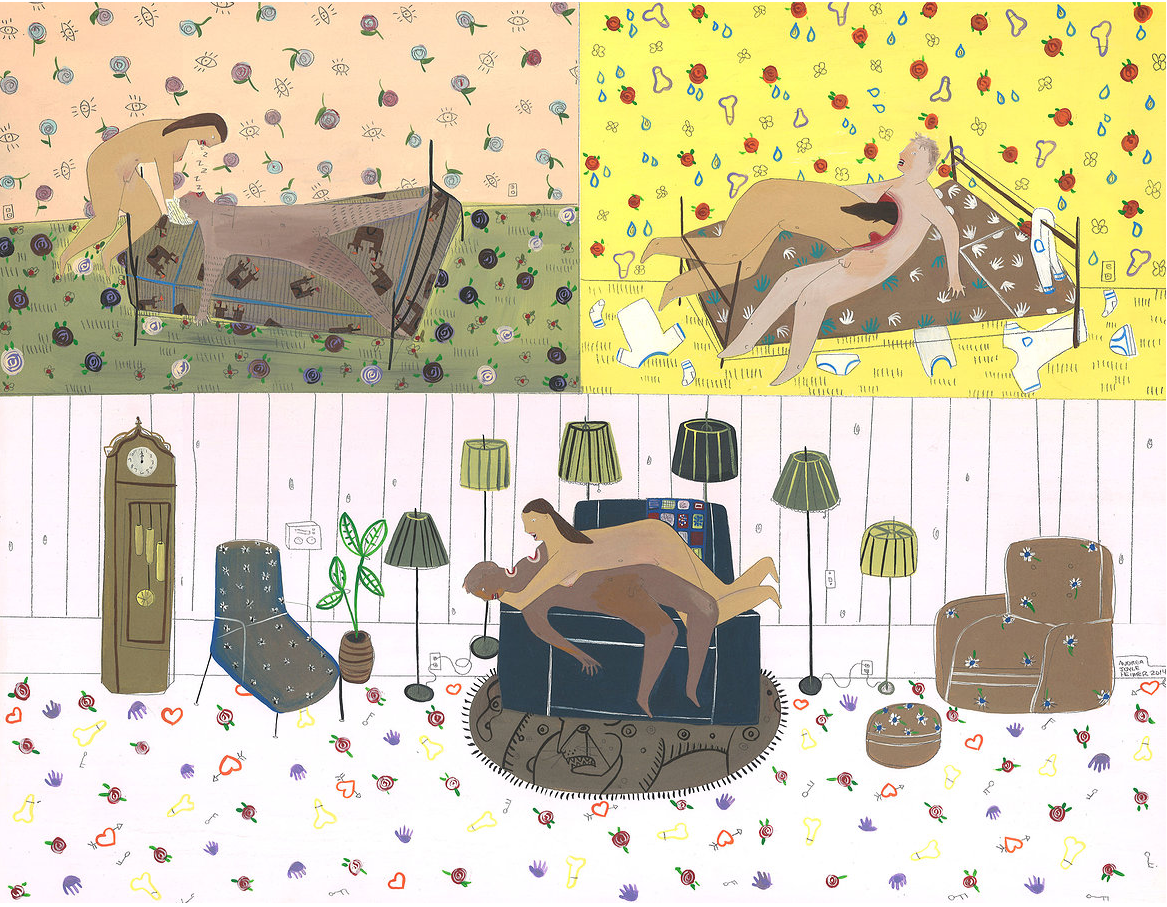
“Since Age 16 My Lovers Never Knew What They Were Getting Into, I’ve Wanted To Consume Their Thoughts, Climb Inside Them, And Utterly Devour Them”by Andrea Heimer
The paintings are placed in the ’80s and ’90s, when you were growing up. What draws you to this time? Is it a process of working through memories of your past?
I’ve changed so much over the last couple of years. I used to have tons of anxiety problems: I wouldn’t fly, I couldn’t be in crowds or speak in front of people. I just assumed I couldn’t do a lot of things, and through my painting I’m realising I don’t have to be like that. It has made me try and reprocess some of those original memories that made me feel like that in the first place. Painting is a really therapeutic way for me to do it. Aesthetically the 80s and 90s have a lot of material to work with. For example I loved the Teenage Mutant Ninja Turtles when I was a kid! My friend and I had a fan club… Well, it was actually just us…These little details, they were like bright spots in like a not so happy, comfortable childhood, so it’s nice to include those. I feel affectionate towards those kinds of things and the aesthetics of the time.
How has the residency at Idrawalot been for you? Does having a month to really focus on your work, does that give you the space to look at your work in a different way?
I paint all the time, so as far as time spent, it is pretty much the same. I think that the most useful and exciting part of it has been being in Berlin. Berlin is so different aesthetically to anywhere I’ve ever been, so that is really cool. And getting to go to some of the museums. In fact, I had not expected this but I went to one that was full of Greek and Roman art, with all the pots and scenes of everyday life, and I looked at them, and realised they are almost drawn like my figures! I was completely fascinated. There is all this incredibly old stuff, and that’s all they were doing – they were painting scenes of everyday life – somebody getting buried, somebody fighting. It was amazing! I would not have got that at home.
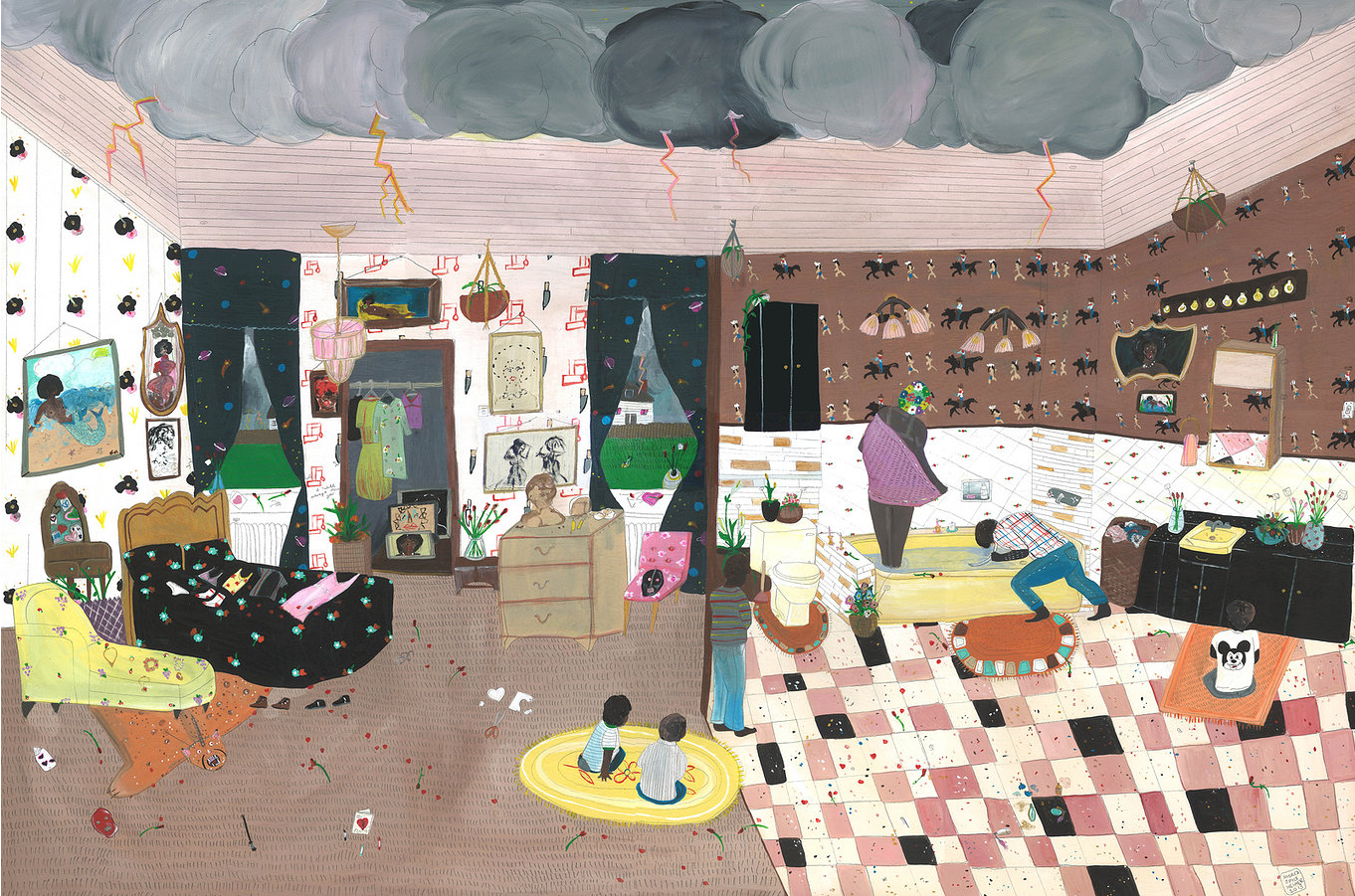
“Mr. Humboldt Was So Dedicated To His Wife He Drank Only Her Bath Water And Sometimes Her Perfume When She Was Out Of Town. He Taught Their Four Boys Everything He Knew About Women” by Andrea Heimer
Thanks Andrea! See more of Andrea’s work on her website, and follow her on her Facebook page.
